
With the popularity of smartphones and tablets, more and more people use mobile devices to browse the web. We usually use mouse events on PC browsers, such as: click, mouseover, etc., can no longer meet the characteristics of the touch screen of mobile devices. The arrival of the touch era cannot be separated from those touch events.
Touch event contains 4 interfaces.
TouchEvent
represents an event that occurs when the touch behavior changes on the surface.
Touch
represents a contact between the user's finger and the touch surface Point.
TouchList
represents a series of Touch; This interface is generally used when the user has multiple fingers touching the touch surface at the same time.
DocumentTouch
Contains some convenient methods for creating Touch objects and TouchList objects.
(Referenced at https://developer.mozilla.org/zh-CN/docs/Web/API/Touch_events )
TouchEvent interface can respond to basic touch events (such as a single finger click), it contains some specific events,
Event type:
touchstart : Touch start (finger placed on the touch screen)
touchmove : Drag (finger moved on the touch screen)
touchend : Touch end (finger removed from the touch screen)
touchenter: Move the finger into a DOM element.
touchleave: The moving finger leaves a DOM element.
There is also touchcancel, which is triggered when dragging is interrupted.
Event properties:
altKey: This property returns a Boolean value indicating whether the Alt key is pressed when the specified event occurs. event.altKey=true|false|1| 0
type: The type of event triggered when touching, such as touchstart
Each touch event includes three touch attribute lists:
1. touches: currently on the screen A list of all finger touch points on the .
2. targetTouches: A list of all touch points on the current element object.
3. changedTouches: A list of touch points involved in the current event.
They are both an array, each element represents a touch point.
The Touch corresponding to each touch point has three pairs of important attributes, clientX/clientY, pageX/pageY, screenX/screenY.
where screenX/screenY represents the offset of the event location to the screen, clientX/clienYt and pageX/pageY both represent the offset of the object corresponding to the event location, but the difference is that clientX/clientY does not include the object The offset is hidden when scrolling, and pageX/pageY includes the offset when the object is scrolled and hidden. The touch point that moves the screen will only be included in the changedTouches list, not the touches and targetTouches lists, so changedTouches will be more commonly used in projects.
Example:
<body onload="start();">
<style type="text/css">
#dom {
width:500px;
height:500px;
background:black;
}
</style>
<div id="dom"></div>
<script type="text/javascript">
function onTouchStart(e){
console.log(e);
}
function start(){
var dom = document.getElementById('dom');
dom.addEventListener('touchstart', onTouchStart, false);
}
</script>
</body>The console output is as follows:

The order in which touch events and mouse events are triggered :
Touchstart > toucheend > mousemove > mousedown > mouseup > click
In many cases, touch events and mouse events will be triggered at the same time (the purpose is to prevent touch devices from being optimized The code will still work fine on touch devices), if touch events are used, you can call event.preventDefault() to prevent mouse events from being triggered. However, when the finger moves touchmove on the screen, the mouse event and click event will not be triggered. Adding preventDefault to the touchmove event can prohibit the browser from scrolling the screen and will not affect the triggering of the click event.

The above events are all built-in in the system and can be used directly. Through these built-in events, many non-native multi-touch gestures can be combined.
Hammer.js is a lightweight JavaScript library that allows your website to easily implement touch events. It relies on jQuery and is used to control multi-touch on touch devices. control characteristics.
Official website: http://hammerjs.github.io/
##The implementation of multi-touch, if you want to know more, please refer to:http://www.cnblogs.com/iamlilinfeng/p/4239957.htm
zepto is lightweight A library compatible with juqery and suitable for mobile development. For specific usage methods, please refer to the official website.http://zeptojs.com/
zepto touch is used A touch event module triggered by a single-point gesture. Touch.js download address:https://github.com/madrobby/zepto/blob/master/src/touch.js
Let’s first look at zepto’s touch module implementation: $(document)
.on('touchstart ...',function(e){
...
...
now = Date.now()
delta = now - (touch.last || now)
if (delta > 0 && delta <= 250) touch.isDoubleTap = true
touch.last = now
})
.on('touchmove ...', function(e){
})
.on('touchend ...', function(e){
...
if (deltaX < 30 && deltaY < 30) {
var event = $.Event('tap')
touch.el.trigger(event)
}
})The touch module binds the events touchstart, touchmove, and touchend to the document, and then implements custom tap and swipe events by calculating the time difference and position difference between event triggers.
手机上也有click事件,从触摸到响应click事件,有会300的毫秒的延迟,原因在于:
"Apple 准备发布iphone的时候,为了解决手机上web页面太小的问题,增加了双击屏幕放大的功能,(double tap to zoom ),当用户触摸屏幕的时候,浏览器不知道用户是要double tap还是要click,所以浏览器在第一次tap事件后会等300ms来判断到底是double tap还是click ,如果在300ms以内点击的话,会以为是double tap,反之是click。"
去掉click事件 300ms 的方法:
(1) 在meta里,加 user-scalable=no 可以阻止双击放大,(缺点: 部分浏览器支持)
(2) 使用fastclick.js 它利用多touchstart touchmove 等原生事件的封装,来实现手机上的各种手势,比如tap, swipe 等,
下载地址 https://github.com/ftlabs/fastclick
调用很简单:
$(function() {
FastClick.attach(document.body);
});缺点: 文件量有点大,为了解决一小延迟的问题,有点得不偿失。
自定义事件
// 创建事件对象
var obj = new Event('sina');
var elem = document.getElementById('dom');
//监听sina事件
elem.addEventListener('sina', function(e){
console.log(e);
},false);
//分发sina事件
elem.dispatchEvent(obj);另外一个创建事件对象的方法是通过CustomEvent,相比于Event的好处是,它可以给处理事件的函数,自定义detail值,这在实际开发中,可能会经常用到。
// 创建事件对象
var obj = new window.CustomEvent('sina', {
detail: {'name': 'lily'}
});
var elem = document.getElementById('dom');
//监听sina事件
elem.addEventListener('sina', function(e){
// 可以接收到创建事件时,传入的detail值。
console.log(e. detail); // {'name': 'lily'}
},false);
//分发sina事件
elem.dispatchEvent(obj);
创建自定义事件,一个兼容性较好的函数:

zepto tap “点透”问题
Zepto 的tap事件是通过document绑定了touchstart和touchend事件实现,如果绑定tap方法的dom元素在tap方法触发后会隐藏、而“隐藏后,它底下同一位置正好有一个dom元素绑定了click的事件, 而clic事件有300ms延迟,触发click事件。则会出现“点透”现象。
解决方案:
1 fastclick.js
它的实际原理是在目标元素上绑定touchstart ,touchend事件,然后在touchend这个库直接在touchend的时候就触发了dom上的click事件而替换了本来的触发时间,touch事件是绑定到了具体dom而不是document上,所以e.preventDefault是有效的,可以阻止冒泡,也可以阻止浏览器默认事件。
http://www.cnblogs.com/yexiaochai/p/3442220.html
2、利用fastclick的事件原理, 直接写一段, 采用 e.preventDefault(); 阻止“默认行为”,将事件绑定到dom元素上,缺点在于不能使用事件代理。
elem.addEventListener(touchend, function(e){
e.preventDefault()
},false);3. 在事件捕获阶段,如果时间差,位置差,均小于指定的值,就阻止冒泡和默认click事件的触发。

4. 用户点击的时候“弹出”一个顶层DIV,屏蔽掉所有事件传递,然后定时自动隐藏, 这个方法比较巧妙。
推荐教程:《PHP教程》
The above is the detailed content of Touch event usage in JS mobile terminal. For more information, please follow other related articles on the PHP Chinese website!
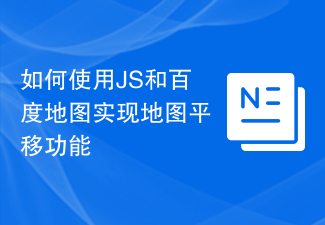 如何使用JS和百度地图实现地图平移功能Nov 21, 2023 am 10:00 AM
如何使用JS和百度地图实现地图平移功能Nov 21, 2023 am 10:00 AM如何使用JS和百度地图实现地图平移功能百度地图是一款广泛使用的地图服务平台,在Web开发中经常用于展示地理信息、定位等功能。本文将介绍如何使用JS和百度地图API实现地图平移功能,并提供具体的代码示例。一、准备工作使用百度地图API前,首先需要在百度地图开放平台(http://lbsyun.baidu.com/)上申请一个开发者账号,并创建一个应用。创建完成
 js字符串转数组Aug 03, 2023 pm 01:34 PM
js字符串转数组Aug 03, 2023 pm 01:34 PMjs字符串转数组的方法:1、使用“split()”方法,可以根据指定的分隔符将字符串分割成数组元素;2、使用“Array.from()”方法,可以将可迭代对象或类数组对象转换成真正的数组;3、使用for循环遍历,将每个字符依次添加到数组中;4、使用“Array.split()”方法,通过调用“Array.prototype.forEach()”将一个字符串拆分成数组的快捷方式。
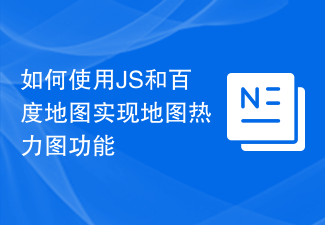 如何使用JS和百度地图实现地图热力图功能Nov 21, 2023 am 09:33 AM
如何使用JS和百度地图实现地图热力图功能Nov 21, 2023 am 09:33 AM如何使用JS和百度地图实现地图热力图功能简介:随着互联网和移动设备的迅速发展,地图成为了一种普遍的应用场景。而热力图作为一种可视化的展示方式,能够帮助我们更直观地了解数据的分布情况。本文将介绍如何使用JS和百度地图API来实现地图热力图的功能,并提供具体的代码示例。准备工作:在开始之前,你需要准备以下事项:一个百度开发者账号,并创建一个应用,获取到相应的AP
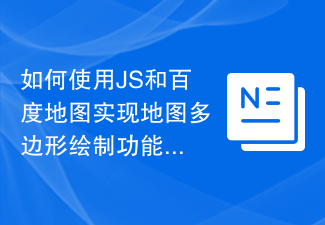 如何使用JS和百度地图实现地图多边形绘制功能Nov 21, 2023 am 10:53 AM
如何使用JS和百度地图实现地图多边形绘制功能Nov 21, 2023 am 10:53 AM如何使用JS和百度地图实现地图多边形绘制功能在现代网页开发中,地图应用已经成为常见的功能之一。而地图上绘制多边形,可以帮助我们将特定区域进行标记,方便用户进行查看和分析。本文将介绍如何使用JS和百度地图API实现地图多边形绘制功能,并提供具体的代码示例。首先,我们需要引入百度地图API。可以利用以下代码在HTML文件中导入百度地图API的JavaScript
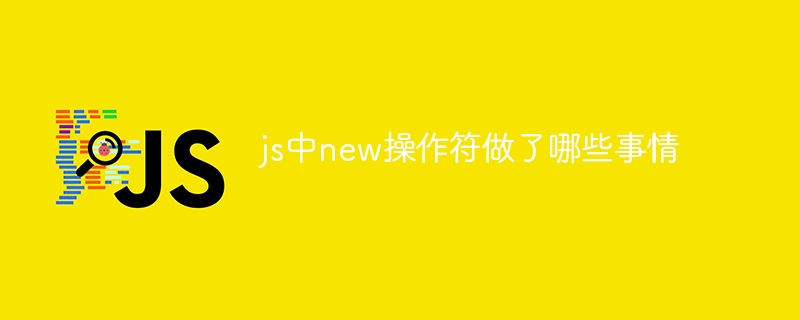 js中new操作符做了哪些事情Nov 13, 2023 pm 04:05 PM
js中new操作符做了哪些事情Nov 13, 2023 pm 04:05 PMjs中new操作符做了:1、创建一个空对象,这个新对象将成为函数的实例;2、将新对象的原型链接到构造函数的原型对象,这样新对象就可以访问构造函数原型对象中定义的属性和方法;3、将构造函数的作用域赋给新对象,这样新对象就可以通过this关键字来引用构造函数中的属性和方法;4、执行构造函数中的代码,构造函数中的代码将用于初始化新对象的属性和方法;5、如果构造函数中没有返回等等。
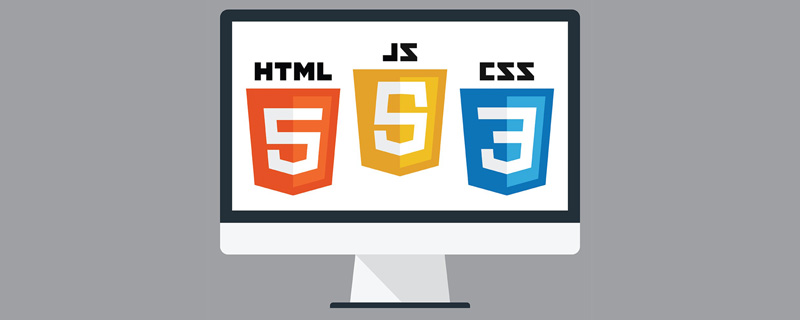 用JavaScript模拟实现打字小游戏!Aug 07, 2022 am 10:34 AM
用JavaScript模拟实现打字小游戏!Aug 07, 2022 am 10:34 AM这篇文章主要为大家详细介绍了js实现打字小游戏,文中示例代码介绍的非常详细,具有一定的参考价值,感兴趣的小伙伴们可以参考一下。
 php可以读js内部的数组吗Jul 12, 2023 pm 03:41 PM
php可以读js内部的数组吗Jul 12, 2023 pm 03:41 PMphp在特定情况下可以读js内部的数组。其方法是:1、在JavaScript中,创建一个包含需要传递给PHP的数组的变量;2、使用Ajax技术将该数组发送给PHP脚本。可以使用原生的JavaScript代码或者使用基于Ajax的JavaScript库如jQuery等;3、在PHP脚本中,接收传递过来的数组数据,并进行相应的处理即可。
 js是什么编程语言?May 05, 2019 am 10:22 AM
js是什么编程语言?May 05, 2019 am 10:22 AMjs全称JavaScript,是一种具有函数优先的轻量级,直译式、解释型或即时编译型的高级编程语言,是一种属于网络的高级脚本语言;JavaScript基于原型编程、多范式的动态脚本语言,并且支持面向对象、命令式和声明式,如函数式编程。


Hot AI Tools

Undresser.AI Undress
AI-powered app for creating realistic nude photos

AI Clothes Remover
Online AI tool for removing clothes from photos.

Undress AI Tool
Undress images for free

Clothoff.io
AI clothes remover

AI Hentai Generator
Generate AI Hentai for free.

Hot Article

Hot Tools

MinGW - Minimalist GNU for Windows
This project is in the process of being migrated to osdn.net/projects/mingw, you can continue to follow us there. MinGW: A native Windows port of the GNU Compiler Collection (GCC), freely distributable import libraries and header files for building native Windows applications; includes extensions to the MSVC runtime to support C99 functionality. All MinGW software can run on 64-bit Windows platforms.

mPDF
mPDF is a PHP library that can generate PDF files from UTF-8 encoded HTML. The original author, Ian Back, wrote mPDF to output PDF files "on the fly" from his website and handle different languages. It is slower than original scripts like HTML2FPDF and produces larger files when using Unicode fonts, but supports CSS styles etc. and has a lot of enhancements. Supports almost all languages, including RTL (Arabic and Hebrew) and CJK (Chinese, Japanese and Korean). Supports nested block-level elements (such as P, DIV),

WebStorm Mac version
Useful JavaScript development tools

Atom editor mac version download
The most popular open source editor

ZendStudio 13.5.1 Mac
Powerful PHP integrated development environment






